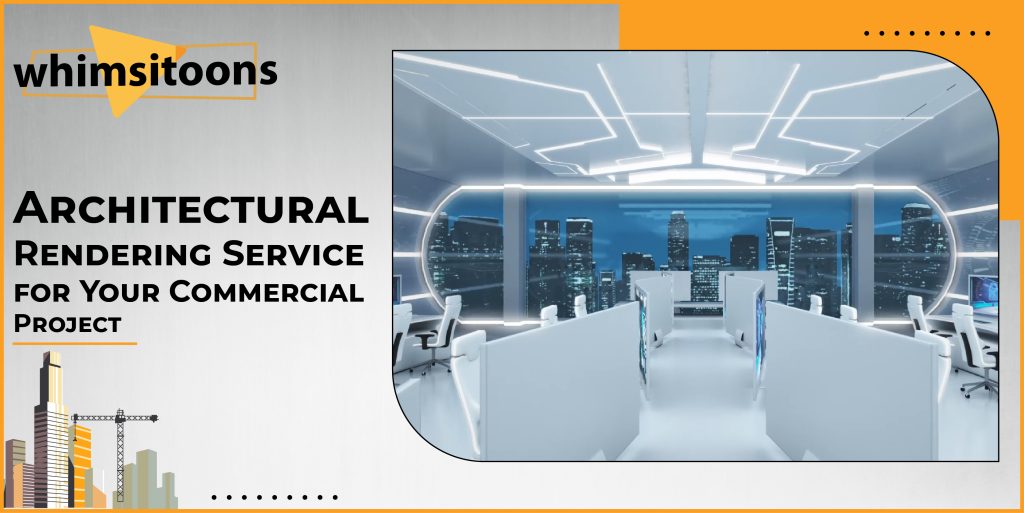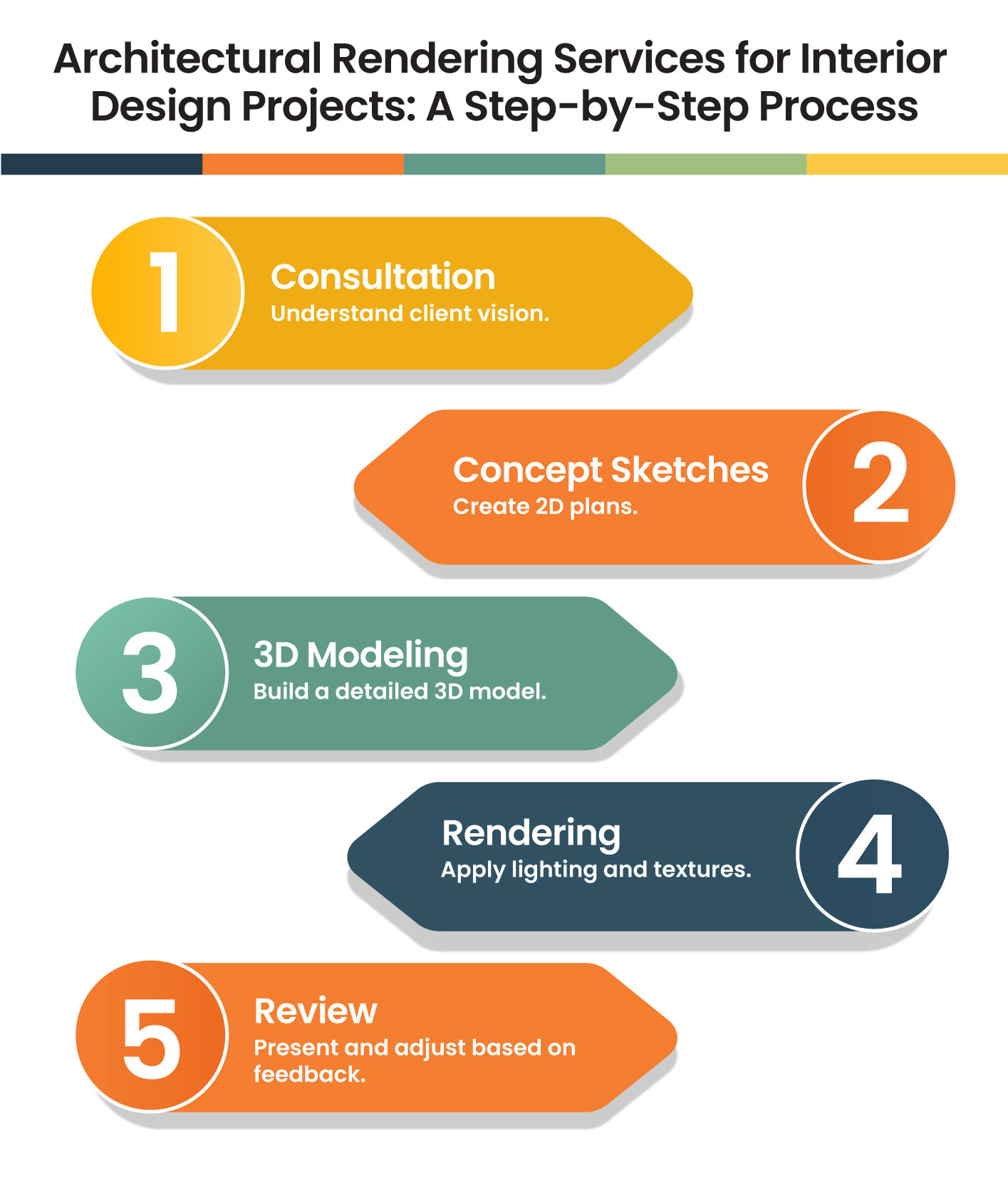Choosing the Right Architectural Rendering Service for Your Commercial Project

Bringing your commercial project to life starts with choosing the right architectural rendering service. These services enhance the design process, aid decision-making, and present your project in the best light. With such a wide array of choices, how can you select the most suitable one? This Whimsitoons guide outlines the key factors to consider, helping you make an informed decision that aligns with your needs.
Understanding Architectural Rendering Services
Architect rendering creates 2D and 3D images or animations to visualize a proposed design. They are valuable for presentations, marketing, and design development.
Benefits of Architectural Rendering
- Enhanced Visualization: See a realistic representation of the project.
- Improved Communication: Bridges the gap between architects, clients, and contractors.
- Cost-Effective: Identifies potential issues early, saving time and money.
- Marketing Advantage: High-quality renderings can be used for promotional materials.
Key Factors to Consider
Choosing the right architectural rendering service involves considering several critical factors. Here is an in-depth manual to assist you in navigating the selection procedure:
Expertise and Experience
When selecting an architectural rendering service, the provider’s expertise and experience should be your top priority. Look for a company with a strong portfolio that showcases a variety of projects, particularly those similar to yours.
- Years in Business: More years typically indicate more experience and reliability.
- Portfolio: Examine their previous work to ensure they can meet your standards.
- Client Testimonials: Reviews and testimonials provide insight into customer satisfaction.
Technology and Software
The quality of renderings largely depends on the technology and software used by the service provider. Ensure they use advanced tools that can produce high-resolution, photorealistic images and animations.
- Software: Tools like AutoCAD, 3ds Max, and V-Ray are industry standards.
- Output Quality: High-resolution images, detailed textures, and realistic lighting effects.
Customization and Flexibility
Your commercial project is unique, and your rendering service should offer customization options to match your specific needs. Whether it’s a minor adjustment or a complete redesign, the service provider should be flexible enough to accommodate your requests.
- Customization Options: Ability to tailor the rendering to your specifications.
- Flexibility: Willingness to make changes and revisions as needed.
Cost and Budget
While cost shouldn’t be the only deciding factor, it’s undoubtedly an important consideration. Request detailed quotes from multiple providers to compare prices and ensure you’re getting value for your money.
- Detailed Quotes: Breakdown of costs to understand what you’re paying for.
- Value for Money: Balance between cost and quality of service.
Types of Rendering Services
Architectural rendering services contain a variety of offerings. Here’s a closer look at the types of services you might need for your commercial project:
Interior Rendering Services
Interior rendering focuses on creating detailed images of your project’s interior spaces, including furniture, lighting, textures, and decor.
- Benefits: Helps visualize interior design, improve layouts, and choose finishes.
- Usage: Ideal for showcasing residential interiors, commercial spaces, and retail environments.
Exterior Rendering Services
Exterior rendering provides a realistic view of the building’s exterior, including landscaping, lighting, and surroundings.
- Benefits: Enhances curb appeal and helps plan outdoor spaces.
- Usage: Useful for marketing properties, planning developments, and obtaining approvals.
Real Estate 3D Rendering
This type of rendering is specifically tailored for the real estate industry. It provides detailed and attractive images to market properties effectively, often incorporating real estate animation for dynamic presentations.
-
-
- Benefits: Attracts potential buyers and investors by showcasing properties in the best light.
- Usage: Commonly used in real estate listings, brochures, and websites.
-
Architectural 3D Animation Services
Architectural 3D animation services bring your project to life through motion. These animations can show how spaces flow together and how the project interacts with its environment, providing a higher level of architectural visualization rendering.
- Benefits: Engaging and dynamic way to present your project.
- Usage: Perfect for presentations, marketing videos, and client meetings.
3D Interior Visualization Services
3D interior visualization services provide a comprehensive view of the interior spaces, focusing on layout, design, and decor elements.
- Benefits: Enhances design accuracy and helps in making informed decisions.
- Usage: Used by interior designers, architects, and developers.

How to Consider Service Providers
Considering architectural rendering service providers involves several steps. Below is a detailed outline to assist you in making the correct decision:
Step 1: Define Your Needs
Start by clearly defining what you need from the rendering service. Are you looking for interior renderings, exterior renderings, or a full animation?
- Project Scope: Outline the specific requirements of your project.
- Desired Outcomes: Identify what you hope to achieve with the renderings.
Step 2: Research Potential Providers
Look for service providers who specialize in the type of rendering you need. Use online searches, industry forums, and recommendations to compile a list of potential candidates.
- Online Reviews: Check reviews on platforms like Google, Yelp, and industry-specific sites.
- Portfolio Review: Examine their portfolio to assess quality and relevance.
Step 3: Request Proposals and Quotes
Contact the shortlisted providers and request detailed proposals and quotes. This will help you compare their offerings and prices.
- Detailed Proposals: Look for clear, comprehensive proposals outlining their approach and deliverables.
- Cost Breakdown: Ensure the quotes include a detailed cost breakdown.
Step 4: Estimate Communication and Professionalism
Effective communication is key to a successful project. During the initial interactions, assess how responsive and professional the service providers are.
- Responsiveness: Quick and clear communication indicates a professional approach.
- Professionalism: Estimate their attitude and willingness to answer your questions.
The Importance of Quality Assurance
Quality assurance is critical in architectural rendering. Ensure the service provider has a robust quality control process in place to deliver high-quality, error-free renderings.
- Quality Control: Check if they have a dedicated team for quality assurance.
- Revisions Policy: Understand their policy on revisions and corrections.
Table: Comparison of Top Architectural Rendering Services
To help you further in your decision-making process, here’s a comparison table of some top architectural rendering services based on key criteria:
|
Service Provider |
Experience (Years) |
Technology Used |
Customization Options |
Cost ($) |
Client Satisfaction |
|
Whimsitoons |
15 |
AutoCAD, V-Ray, 3ds Max |
Very High |
2500-7000 |
5/5 |
|
RenderX |
10 |
AutoCAD, V-Ray |
High |
2000-5000 |
4.8/5 |
|
VizArch |
8 |
3ds Max, Corona |
Medium |
1500-4500 |
4.6/5 |
|
ArchiVis |
12 |
Revit, Lumion |
High |
2500-6000 |
4.9/5 |
Common Pitfalls to Avoid
When choosing an architectural rendering service, be aware of these common pitfalls:
- Overlooking Experience: Ensure the provider has relevant experience.
- Ignoring Client Reviews: Reviews offer insights into their reliability and quality.
- Not Clarifying Costs: Get detailed quotes to avoid hidden fees.
- Neglecting Quality Control: Ensure they have robust quality assurance processes.
FAQs
- What is the difference between 2D and 3D architectural rendering?
2D rendering involves creating flat images that represent a building’s layout and design. In contrast, 3D rendering produces three-dimensional images that offer a more realistic and immersive view of the project.
- How long does it typically take to complete a rendering project?
The timeline varies depending on the project’s complexity and the service provider’s schedule. The amount of time it takes can vary from a few days to several weeks on average.
- Can I request changes after the initial rendering is complete?
Most service providers allow revisions, but it’s essential to clarify the revisions policy beforehand to understand the potential costs and time involved.
- Are there any specific software tools I should look for in a rendering service provider?
Yes, industry-standard tools like AutoCAD, 3ds Max, V-Ray, and Lumion are commonly used for high-quality renderings. Ensure your provider is proficient in these tools.
- What should I provide to the rendering service to get started?
Typically, you’ll need to provide architectural plans, design specifications, and any other relevant details about the project. Clear communication about your vision and requirements is also crucial.
Conclusion
Choosing the right architectural rendering service for your commercial project is crucial for its success. By assessing factors like expertise, technology, customization options, and cost, you can make an informed decision that meets your needs. The ideal provider should deliver high-quality renderings and understand your vision to bring it to life with precision and creativity. For expert architectural rendering services, visit Whimsitoons to see how we can help visualize your dream project.
FAQs
Q 1: What is the difference between 2D and 3D architectural rendering?
2D rendering involves creating flat images that represent a building's layout and design. In contrast, 3D rendering produces three-dimensional images that offer a more realistic and immersive view of the project.rn
Q 2: How long does it typically take to complete a rendering project?
The timeline varies depending on the project's complexity and the service provider's schedule. The amount of time it takes can vary from a few days to several weeks on average.rn
Q 3: Can I request changes after the initial rendering is complete?
Most service providers allow revisions, but it's essential to clarify the revisions policy beforehand to understand the potential costs and time involved.rn
Q 4: Are there any specific software tools I should look for in a rendering service provider?
Yes, industry-standard tools like AutoCAD, 3ds Max, V-Ray, and Lumion are commonly used for high-quality renderings. Ensure your provider is proficient in these tools.rn
Q 5: What should I provide to the rendering service to get started?
Typically, you'll need to provide architectural plans, design specifications, and any other relevant details about the project. Clear communication about your vision and requirements is also crucial.rn










